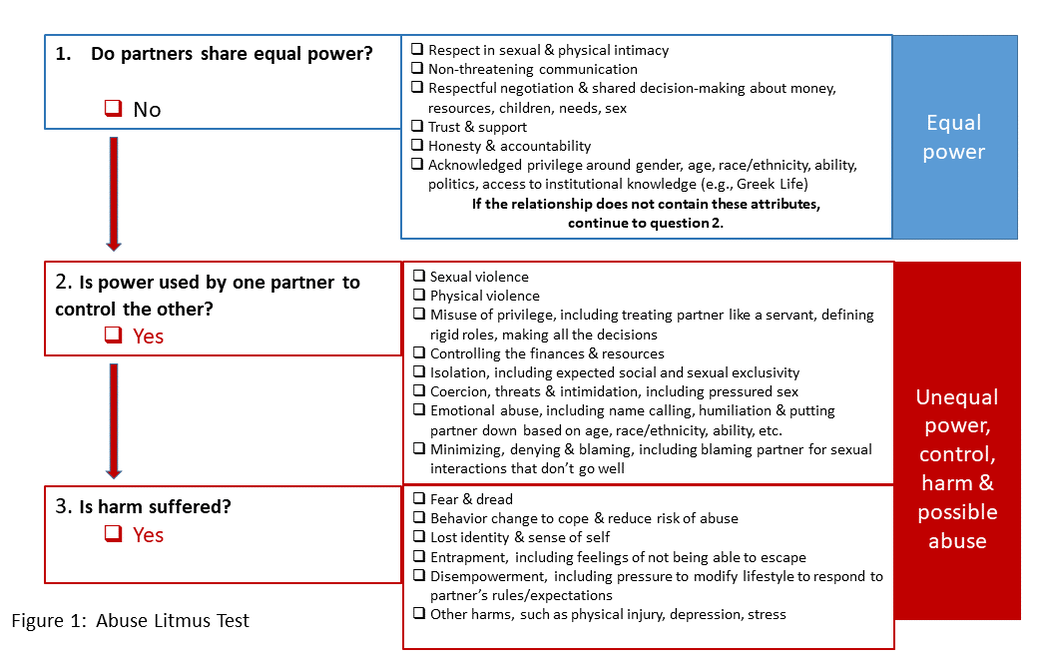|
We learn a lot about romantic relationships from the stories we consume and come to love. Through fairy tales, books, and films we learn what to expect in relationships (and what is expected of us) long before anyone overtly teaches us about them. We might be lucky enough to observe a healthy romantic relationship between our parents. But even among those who are closest to us, the interactions that truly define the health of a relationship often occur behind closed doors. We rarely get a window into intimate moments, and I’m not just talking sex. We rarely see couples argue, and if we do, we almost never see them make up. We rarely see them share their wildest dreams and deepest fears with their partner or witness their partner’s response to those disclosures. But we do see these moments in the fiction we consume, making these tales powerful ones for shaping our perceptions of real-life relationships.
The “norms” or “rules” that are conveyed in fictional tales through context, plot, and dialogue (or even facial expressions in film) tend to be absorbed by us unconsciously and we begin to compare our relationships to the fictional ones that we’re familiar with. For example, we might expect the kind of romance and drama that we read in books like Twilight and Fifty Shades of Grey and see in films like The Notebook and A Star is Born. But even before we experience these stories in adolescence and adulthood, we are primed in childhood to accept them with early fairy tales such as Beauty and the Beast, long before we’ve had any romantic experiences ourselves. Versions of Beauty and the Beast date back to the early 1700s and showcase what we call the virgin-beast trope. Where a young, virginal, submissive female is pursued by an older, sexually experienced, aggressive male. In a paper we published earlier this year, we aimed to define and describe the virgin-beast trope given how common it is. The virgin-beast trope has become a symbol, nearly a prerequisite of heterosexual romance…and from what I understand a staple in fictional same-sex romance as well. In the paper, we outline aspects of this trope that we tend to romanticize that also happen to be hallmark indicators of unhealthy romantic relationships and even deadly ones. Many of the relationship qualities that we consider romantic in fictional tales are actually problematic in real life. When a relationship is problematic in real life, there is usually a substantial difference in power (e.g., finances, age, privilege, education) and the partner with more power uses their power to control the other partner. This kind of control can look like physical (e.g., hitting) and verbal abuse (e.g., name calling), but it can also look like stalking (e.g., electronically monitoring whereabouts) or manipulation (e.g., giving extravagant gifts after a fight). The target/victim/survivor then suffers harm (e.g., loss of resources, loss of potential, depression/anxiety, physical pain) due to their partner’s controlling and abusive behavior. The Abuse Litmus Test was developed to help audiences determine if an on-screen relationship has unhealthy power and control dynamics by answering these questions: Do partners share equal power? Is power used by one partner to control the other? Is harm suffered?
We developed this discussion guide that teachers or parents can use to help younger people apply the Abuse Litmus Test to the Disney animated version of Beauty and the Beast (1991). We believe you can usethis student guide with kids as young as 7 years old. We tried with 4 and 5-year-old kids and did not have much success. They were more focused on Belle’s dress and Beast’s feet (concrete, visual depictions) than they were on their relationship dynamics (abstract, or even invisible depictions) which is definitely on-brand for younger kiddos.
Through applying the Abuse Litmus Test to Beauty and the Beast, Twilight, and Fifty Shades of Grey, we explain how this popular trope is romanticized and how that romanticization can mask abuse. You can use these stories along with the discussion guides linked above to explain the following realities of intimate partner violence to teens or older children: Abusers are often romantic, enchanting, and charming. Abusers are not ugly monsters hiding in a cave. They are often very good-looking and charming. They charm their target and everyone around them to provide the space for them to control and abuse their target. They tend to be very different behind closed doors. They give grand gestures and gifts, write songs, and surprise their target to make up for their outbursts and abuse, and to keep their target close. They also do these things to become close with the target’s friends and family-providing them with gifts, compliments, a helping hand, etc. Once that trust and closeness is established, the abuser often shares their "concerns" about their target’s mental health, so that those closest to the target doubt their judgement or the truth of any abuse they disclose. Abusive relationships often appear romantic from the outside and the target will often feel loved by their partner’s “obsession” with them. It’s normal for people (girls especially) to like being wanted. I mean, you would swoon too if the Duke from Bridgerton said he burns for you. It may seem romantic to have someone obsess over us, or declare that they can’t live without us. But consistent, focused attention and constant contact (e.g., 100s of text messages) is really just stalking. We tend to romanticize many of these behaviors as sexual desire or a drive to fiercely protect their beloved. But if someone is “crazy about you” and states that they can’t “live without you” it’s likely a sign of mental illness, not a healthy romantic bond. When someone abuses you, it does not make you love them less. Think of the ones you love, you would be way more motivated to make the abuse stop than to end the relationship. And the abuse does stop for a period of time and during that time the relationship usually feels incredibly intimate, romantic, and fun. The abuser goes to great lengths to apologize for their mistakes, known as “the honeymoon phase.” And our popular culture and romantic media messages do a great job of convincing the target that she has the power to change him and he provides evidence of his change through romantic gestures among other acts, causing the target to hang in there. The targets, not the abusers, will seem like the “crazy” ones. When someone you love treats you poorly, it is upsetting. Anyone would cry or feel scared about what might happen next. When an abuser repeatedly toggles back and forth between a romantic, caring demeanor to a raging, controlling one, it is confusing and scary. You do begin to doubt your own judgment. And abusers capitalize on this doubt and often feed their targets with information to suggest that everything is fine, known as “gaslighting.” If someone does not leave an abusive partner quickly, it is not because they lack self-respect. Targets stay for a variety of reasons, the most common is usually to protect children. It is safer to be with your children alongside the abuser than to share custody with an abuser and risk your children being alone with them. But even those without children will have a very difficult time leaving, so you may wonder why they don’t get help. When someone’s partner is abusive, they do not want to get them in trouble, they want the abuse to stop. They don’t want the relationship to end, they want the abuse to stop. "True love" should not have to conquer all. Maybe true love can conquer all, but it doesn’t have to. Drama (e.g., near death experiences, ex-partners resurfacing, being a vampire) may be needed to drive a plot in fiction, but it is dangerous in real life. Do not confuse drama with romance. You do not need to transform yourself or abandon your family or your dreams for love. You do not need to fight in order to feel close while making up. Unfortunately, intimate partner violence is so common that we will likely never reach a point in time where an example of it does not emerge in mass media headlines. Current events and popular culture examples provide the perfect “teachable moments” for adults to connect with teens. They are abstract enough to diffuse embarrassment, while entertaining enough to make conversations engaging. I do think it is better to capitalize on a popular news story and turn it into a moment for social change...otherwise, we are simply voyeurs into others’ misery. To learn more about healthy relationships and signs of abuse visit: loveisrespect.org Photo Source: Dollar Photo Club
1 Comment
Elizabeth Rivera
12/9/2022 10:09:34 pm
This blog post does such a great job at bringing to light the fact that many of the romantic relationship we see in movies and TV are unhealthy and even abusive. These flawed relationships are romanticized in a way that paints a picture of them being ideal and what young people should strive for when it comes to their own relationships. It can be quite damaging to the young mind, and I believe we need to address this problem more often. I have found myself thinking about Beauty and the Beast and how that movie romanticizes a relationship that is nowhere near healthy, and what makes it worse is that young kids are seeing this movie and thinking it's "cute". I really want to stop seeing these types of relationships depicted in movies and TV because it is leaving a negative impression on younger audiences.
Reply
Leave a Reply. |
About this Blog:I'm here to help us discuss sexuality, gender, and media by integrating information from academic and mainstream sources. I hope this resource produces more sexually competent people who raise sexually competent kids. Categories
All
|


